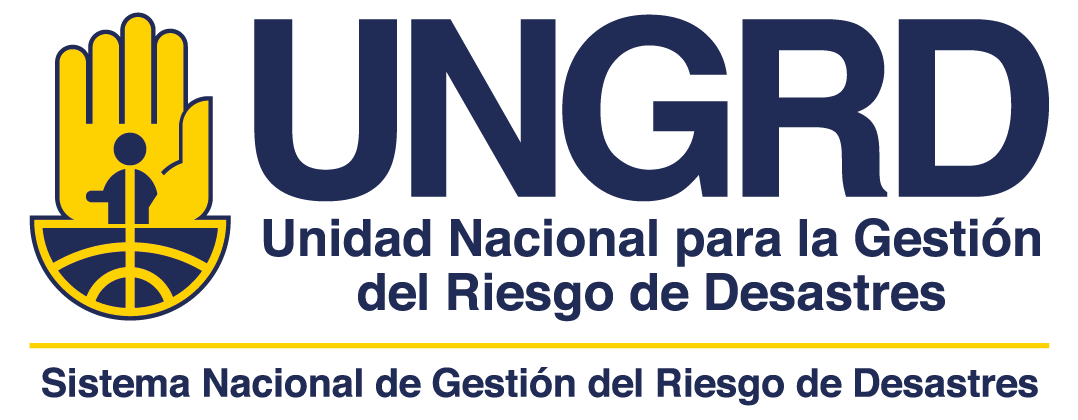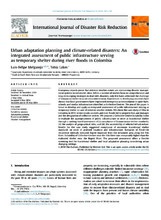Mostrar el registro sencillo del ítem
Urban adaptation planning and climate-related disasters: An integrated assessment of public infrastructure serving as temporary shelter during river floods in Colombia
| dc.creator | L. Melgarejo | |
| dc.creator | T Lakes | |
| dc.date.accessioned | 2016-07-28T13:29:08Z | |
| dc.date.available | 2016-07-28T13:29:08Z | |
| dc.date.issued | 2013 | |
| dc.identifier.citation | L. Melgarejo, T Lakes. (2013). Urban adaptation planning and climate-related disasters: An integrated assessment of public infrastructure serving as temporary shelter during river floods in Colombia . Berlin. International Journal of Disaster Risk Reduction | |
| dc.identifier.uri | http://hdl.handle.net/20.500.11762/19820 | |
| dc.description.sponsorship | URBANA programme | |
| dc.format | Digital (.pdf) | |
| dc.language.iso | en | |
| dc.publisher | International Journal of Disaster Risk Reduction | |
| dc.source | reponame:Repositorio Institucional Unidad Nacional para la Gestión del Riesgo de Desastres | spa |
| dc.source | instname:Unidad Nacional para la Gestión del Riesgo de Desastres | spa |
| dc.subject | Collective centres | |
| dc.subject | sustainability analysis | |
| dc.subject | adaptation planning | |
| dc.subject | transitional shelter | |
| dc.subject | disaster management | |
| dc.title | Urban adaptation planning and climate-related disasters: An integrated assessment of public infrastructure serving as temporary shelter during river floods in Colombia | |
| dc.type | info:eu-repo/semantics/article | spa |
| dc.description.departamento | BERLIN | |
| dc.type.spa | Articulo de investigación | |
| dc.rights.accessRights | info:eu-repo/semantics/openAccess | spa |
| dc.description.abstractenglish | Emergency reports prove that extreme weather events are overcoming disaster manage- ment systems in vulnerable cities. While a number of studies focus on comprehensive and long-term coping strategies to deal with disasters, only few have addressed the challenge of temporary shelter in acute crisis intervention. Experiences in developing countries have shown that local governments have improvised emergency accommodation in sport halls, schools, and similar infrastructure identified as Collective Centres. The aim of this paper is hence to develop and apply an integrated assessment of public infrastructure serving as temporary shelter in case of extreme weather events. We chose the case study of Chía in Colombia in 2011, where erratic rainfalls and river floods led to property loss and damages and the designation of collective centres. We propose a Collective-Centre Suitability Index to evaluate the appropriateness of public infrastructure to serve as transitional shelter through a ranking-based assessment of (i) compliance of humanitarian shelter standards- (ii) the analysis of geographical risks- and (iii) the accessibility of selected infrastructure. Results for the case study suggested compliance of minimum transitional shelter standards on most of assessed locations and infrastructure. Scenarios of flood-risk recurrence intervals indicated higher exposure from the urbanized area along the Frío River. Suitability of Collective Centres near the Frío River was comparably higher than the evaluated shelter near the Bogotá River. The proposed assessment offers a flexible screening tool for transitional shelter and local adaptation planning considering urban changing settings. | |
| dc.relation.publisherversion | http://dx.doi.org/10.1016/j.ijdrr.2014.05.002 | |
| dc.type.hasVersion | info:eu-repo/semantics/acceptedVersion | spa |



